Henri Cartier-Bresson’s groundbreaking street photography inspires photographers even today. Universally recognized as the “father of street photography,” Cartier-Bresson’s innovative style of capturing spontaneous moments impacted both photography and humanity’s understanding of the world as seen through a camera. His masterful work seamlessly merged artistic vision, technical precision, and philosophical depth to immortalise fleeting moments with extraordinary grace.
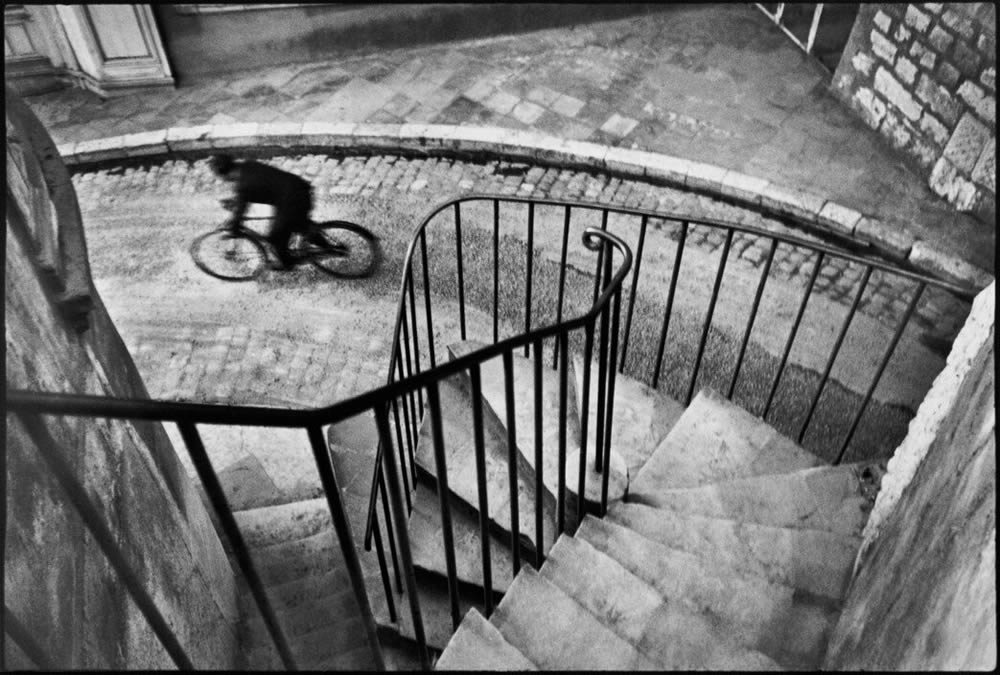
This in-depth analysis will examine why Henri Cartier-Bresson is considered the father of street photography, focusing on his unique style, influential innovations, and lasting legacy.
1. The Origins of Cartier-Bresson’s Photographic Journey
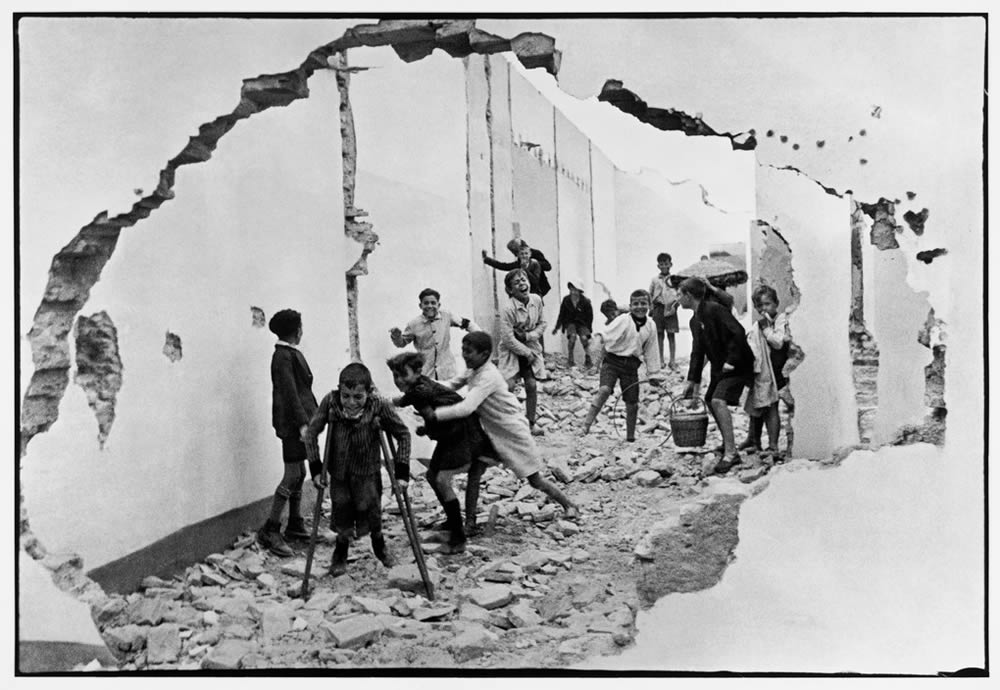
Henri Cartier-Bresson entered the world in 1908 in Chanteloup-en-Brie, France. He started as a painter, especially loving Surrealism, which later influenced his photography. His introduction to photography came about almost by chance when he acquired his first Leica camera in the early 1930s. Buying this was a turning point, making him one of the 20th century’s most important photography artists.
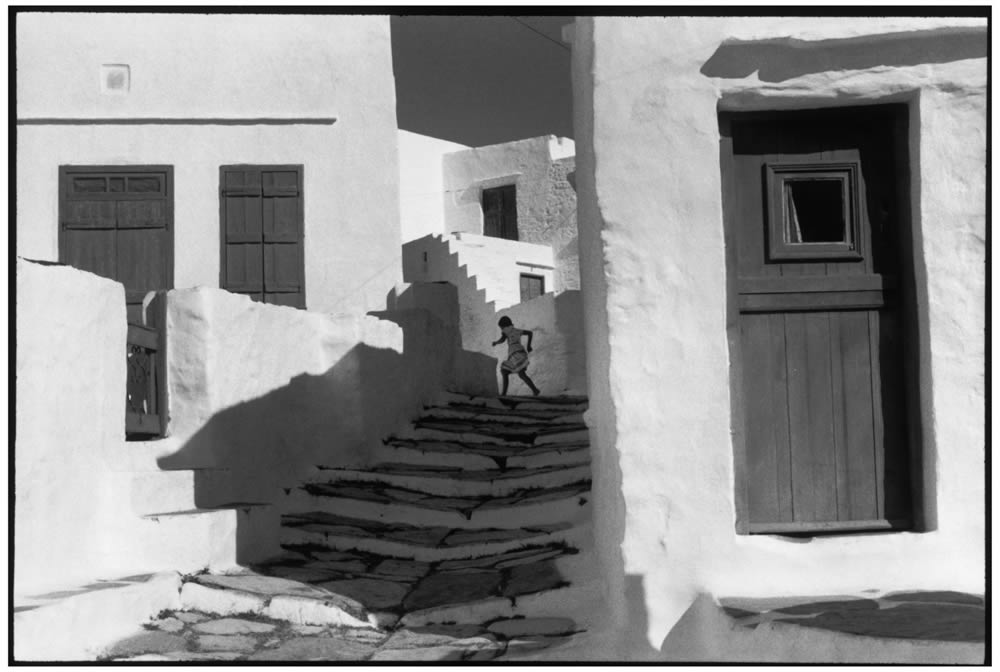
Cartier-Bresson discovered his true calling in documenting life as it unfolded on the streets. Photography, to him, was a powerful art form capturing life’s beauty. Influenced by Surrealism’s emphasis on the unconscious, irrational, and spontaneous, his street photography developed a distinctive style. His revolutionary art was based on this concept.
2. The Decisive Moment: A Philosophy that Defined an Era
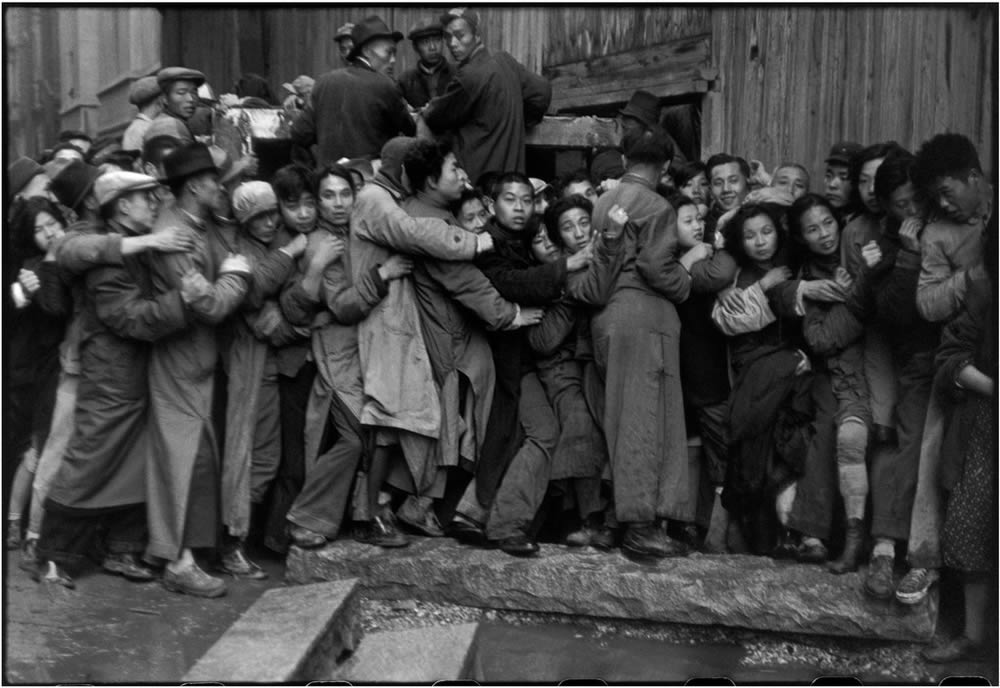
Cartier-Bresson’s legacy in street photography rests on his innovative idea of the “decisive moment”. The “decisive moment” represents that precise instant when all elements within a frame achieve perfect harmony—composition, movement, emotion, and context. For Cartier-Bresson, this moment revealed a deeper, more profound truth about both subject and scene.
Cartier-Bresson demonstrated an uncanny ability to anticipate these moments, operating more through instinct than calculation. His special talent was noticing and recording fleeting, one-of-a-kind moments in everyday life, setting him apart. As he famously expressed, “To me, photography is the simultaneous recognition, in a fraction of a second, of the significance of an event as well as of a precise organization of forms which give that event its proper expression.”
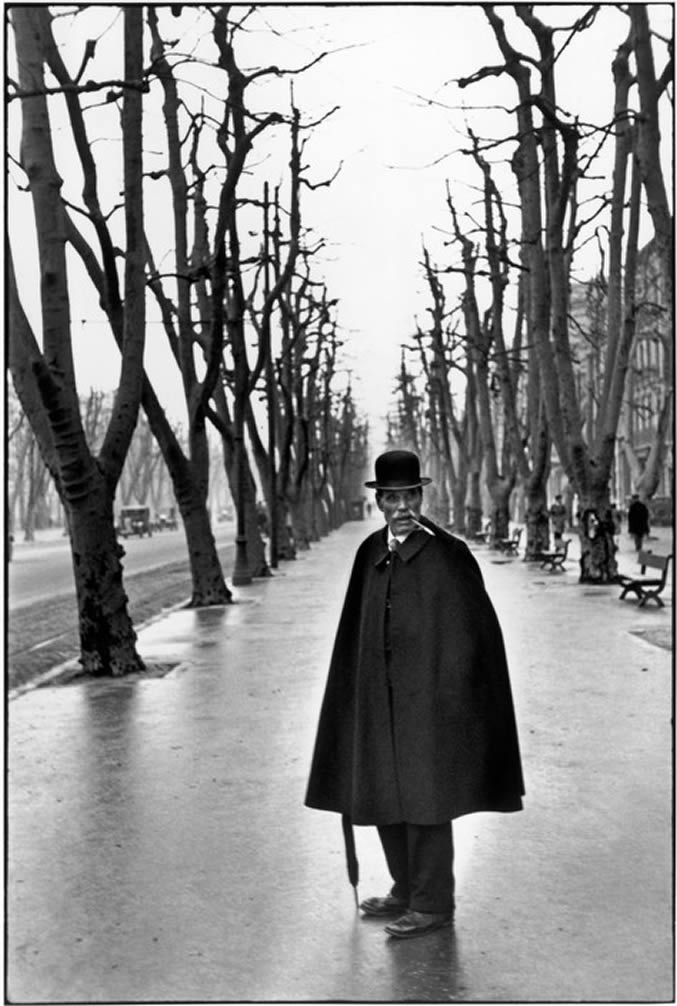
The “decisive moment” philosophy continues to serve as a guiding beacon in contemporary street photography. Cartier-Bresson’s fundamental belief in the photographer’s role as an invisible observer, documenting without disturbing the scene’s natural flow, established the foundation of candid photography. He viewed the camera as an organic extension of the eye, maintaining that photography transcended mere technical proficiency—it was about positioning oneself perfectly in space and time to capture life’s authentic moments.
3. Innovations in Style and Technique
Cartier-Bresson’s stylistic innovations profoundly influenced the evolution of street photography. His characteristic use of the Leica 35mm camera enabled him to move with remarkable fluidity whilst maintaining discretion. The quiet, compact camera was indispensable; he could photograph anything without attracting attention.
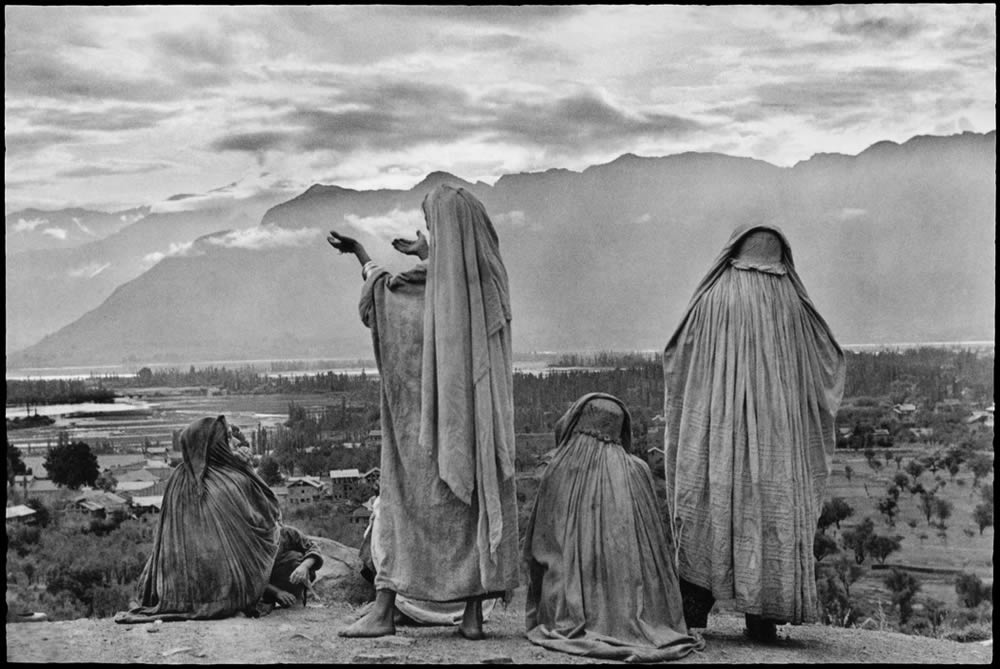
What distinguished Cartier-Bresson was his unwavering dedication to compositional excellence. His photographs showcase robust geometric elements, frequently incorporating directional lines, thoughtful framing, and harmonious balance. His deep appreciation for classical art significantly influenced his work, evident in his masterful understanding of form and structure. He steadfastly refused to crop or manipulate his photographs, believing that the composition must achieve perfection at the precise moment of capture.
To keep photos real, Cartier-Bresson avoided flash and artificial lights, using natural light instead. He artfully uses light and shadow in his photographs to add depth and atmosphere without losing realism.
4. Documenting History Through Street Photography
Henri Cartier-Bresson’s contributions to street photography extend well beyond technique and philosophy—his work stands as a historical chronicle of the 20th century’s pivotal moments. A cooperative photography agency, Magnum Photos, was co-founded by him in 1947 to give photographers more control, especially in photojournalism.
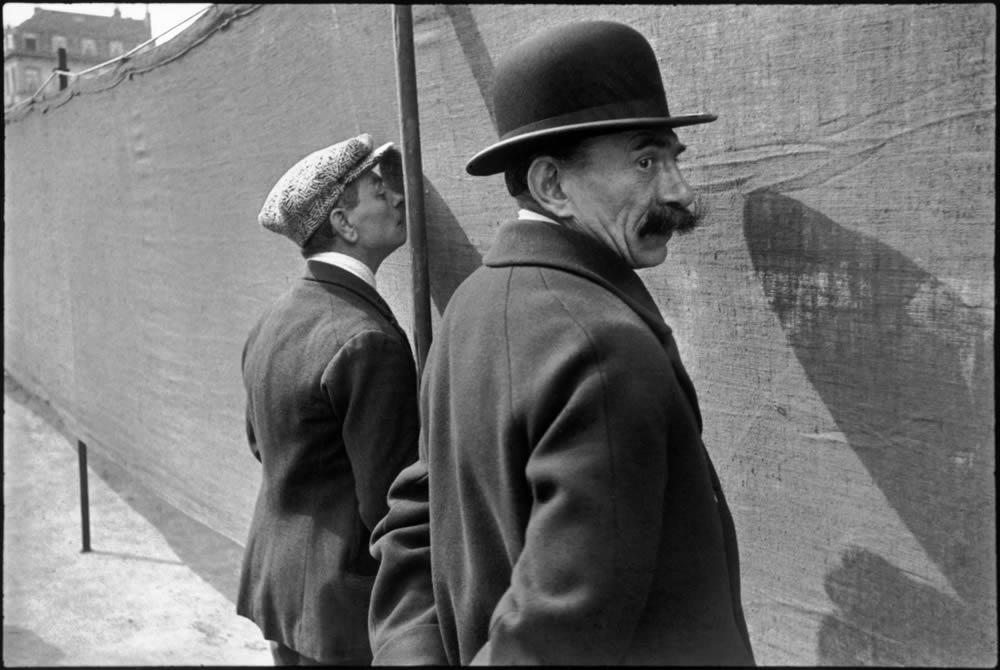
Throughout his career, Cartier-Bresson traversed the globe, documenting crucial historical events through his lens. He witnessed Paris’s liberation in 1944, captured Gandhi’s final moments in 1948, and chronicled the emergence of Communist China. Despite photographing momentous world events, he maintained an unwavering focus on capturing the human element. Even amidst warfare and political upheaval, Cartier-Bresson’s images prioritised people and their daily lives over the spectacle of events.
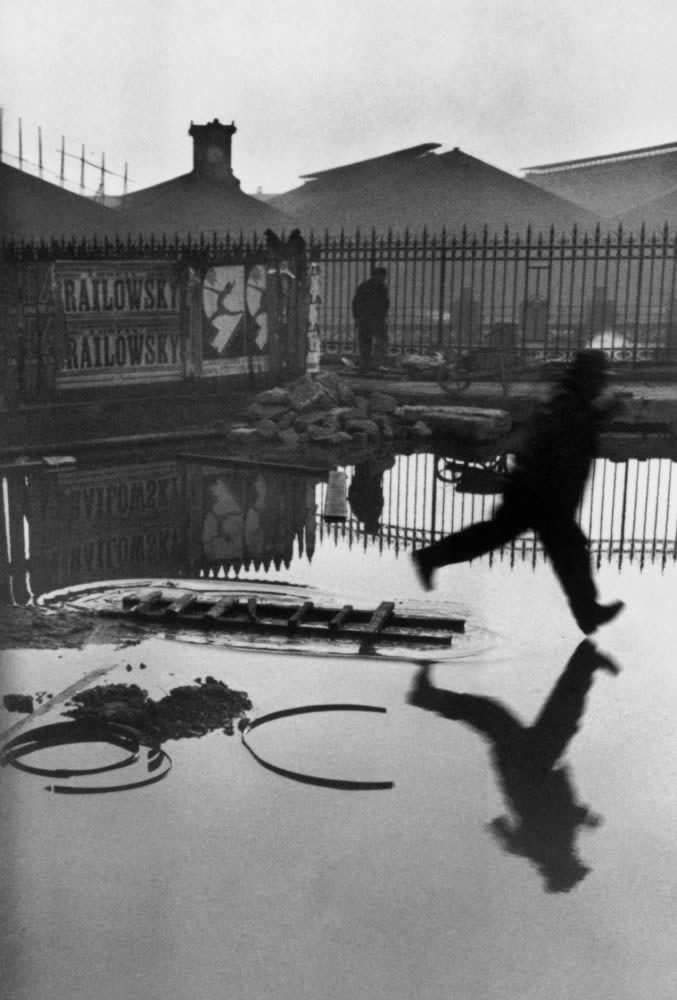
His iconic photograph of a man leaping over a puddle behind the Gare Saint-Lazare in Paris (1932) illustrates his ability to transform ordinary, fleeting moments into magical captures. The image freezes the subject mid-leap, suspended above the water’s surface. It represents the quintessential manifestation of the decisive moment, perfectly balancing composition, timing, and subject matter.
5. A Lasting Legacy
Henri Cartier-Bresson’s impact on the photographic medium is immeasurable. He pioneered street photography and inspired photographers globally with his innovative approach. He turned photography from a mechanical process into an art form by focusing on spontaneous moments and genuine emotion.
Through his groundbreaking work, Cartier-Bresson elevated street photography from an obscure pursuit to a respected artistic discipline. Before his impact, photography wasn’t considered a true art form like painting or sculpture. However, his remarkable body of work bridged this divide, seamlessly blending documentary photography with fine art sensibilities. His photographs effectively dismantled the boundaries between these distinct genres, establishing street photography as a vital form of visual storytelling.
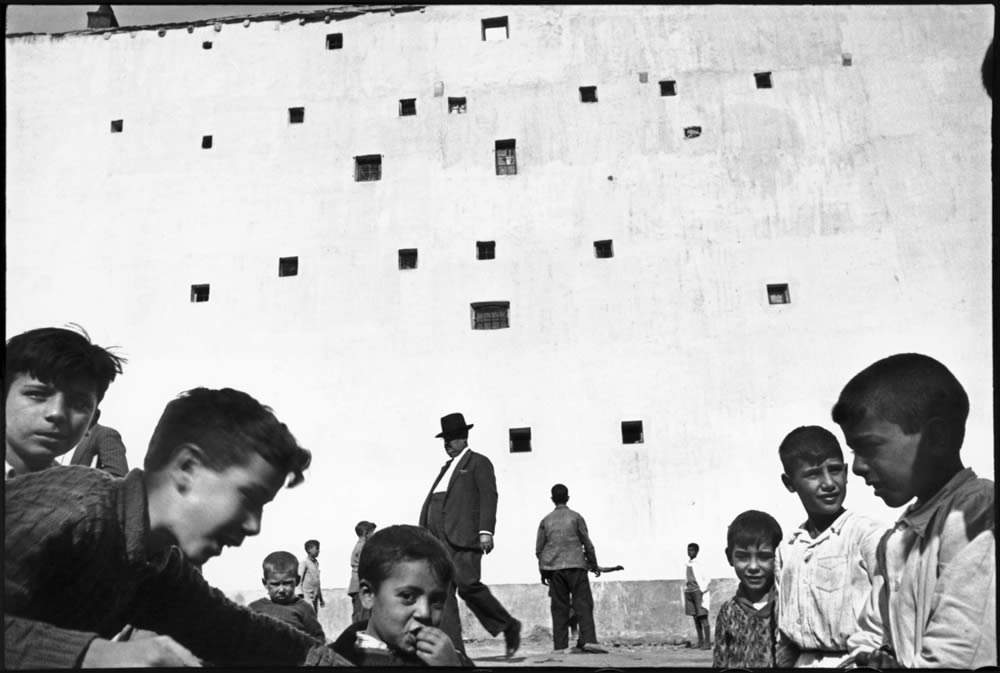
His enduring influence resonates through generations of photographers who draw inspiration from his methodologies. Contemporary street photographers continue to pursue their own interpretations of the decisive moment, applying the fundamental principles that Cartier-Bresson championed over eight decades ago. His unwavering belief in the power of unstaged, candid photography remains particularly relevant in today’s digital age, where authenticity often competes with heavily manipulated imagery.
Conclusion
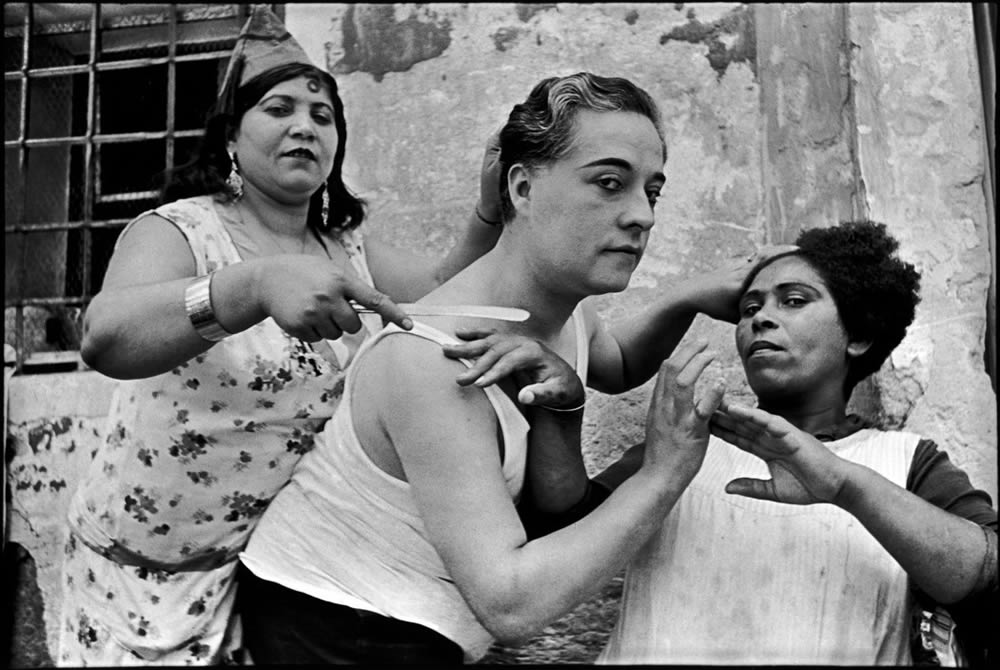
Henri Cartier-Bresson’s designation as the father of street photography is thoroughly justified, given his profound and lasting contributions to the genre. His revolutionary approach not only transformed photographic practice but redefined the medium’s possibilities. Cartier-Bresson made art from everyday scenes by highlighting the most important moment. His legacy continues to shape street photography, ensuring his vision remains fundamental to the art form for future generations.


Leave a Reply